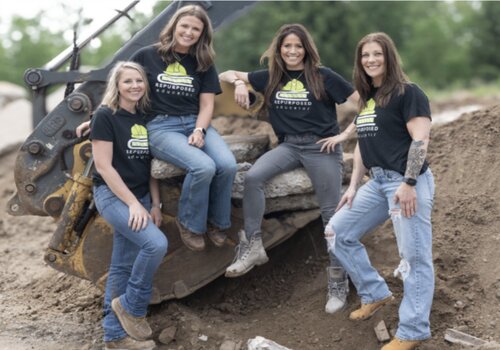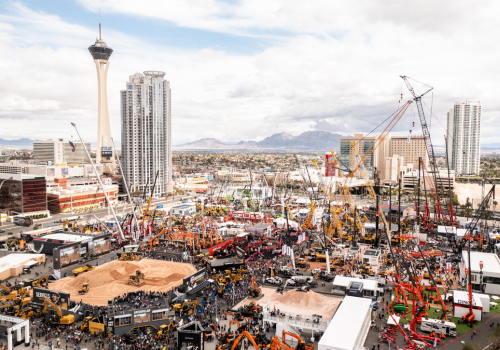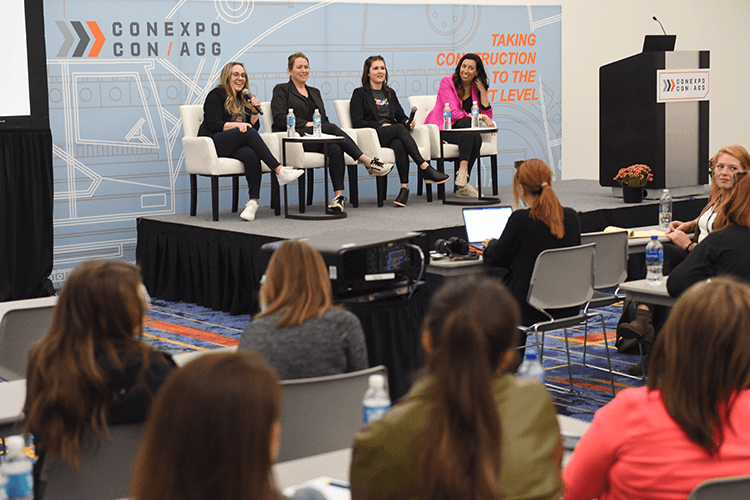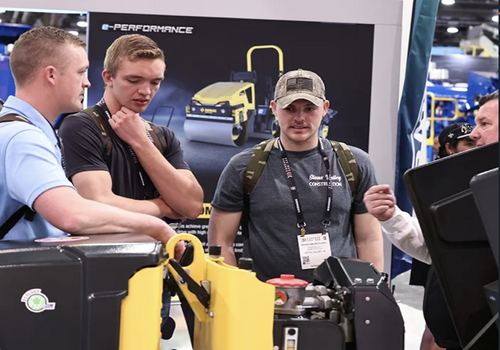There are some practical things a construction company can do to protect itself from lawsuits and large settlements. However, company leadership must first rid itself of the “that’s the way we’ve always done it” mentality.
Once open to new approaches, there are four key areas construction companies can focus on:
- Government standards
- Rental tickets
- Clever wording in contracts
- Training and documentation
Understand What Government Standards Say
It is critical for construction companies to understand what safety agencies like OSHA and ANSI say about the types of work being done and equipment being used. Not only do these standards become the foundation of a solid safety training program, but a solid understanding of them can help prepare a stronger defense in the event of a lawsuit.
In the case of cranes, for instance, there is an ANSI standard for care and operation. “Prior to 2007, the standard essentially said the crane operator was responsible for everything under his or her control,” says Billy Smith of NBIS (NationsBuilders Insurance Services), which offers specialized commercial insurance programs for heavy industry and construction equipment. “It was very broad, and plaintiff lawyers loved it. But since 2007, chapter 5-3.1.3 outlines separate responsibilities for the crane owner, crane user, site supervisor, lift director and crane operator. For instance, site supervision is the controlling entity and is responsible for a lot of things, including ground conditions. That’s a good thing for the construction industry because ground conditions can change fast and lead to accidents.”
When interpreting government standards, Smith offers a word of caution: Look out for the words should and shall. Should suggests that a certain action or responsibility is more voluntary in nature because it is simply being suggested. Shall, on the other hand, is mandatory. Understanding the difference is important when it comes time to defend yourself.
 Rental Tickets
Rental Tickets
Smith says a construction company’s daily rental ticket is often its first line of defense. “Be careful what you sign,” he adds. If you didn’t do anything wrong, the last thing you want to do is pay for somebody else who did. So watch out for “duty to defend” contract provisions.
NBIS often adds lines for additional signatures of other parties. For example, when someone rents a piece of equipment to do a job, they are typically working for somebody else when they show up to do the job. It’s helpful to get signatures from both the equipment lessee and the subcontractor.
Smith says a construction company should also consider putting ground-bearing pressures on rental tickets, especially when dealing with cranes. As pointed out earlier, ANSI says ground conditions are the responsibility of site supervision. “The construction (crane) industry just needs to point out what is needed to support the equipment,” Smith says.
Clever Wording in Contracts
Smith says there are several components of an upper-tiered MSA (master service agreement) that construction companies should be on high alert for.
Indemnification wording. Certain wording in the indemnification section can broaden the scope of liability. Examples include “arising out of,” “flowing from” and “done in connection with.” Wording like that opens the door to any casual connection to what the construction company was doing at the time of an incident. “It’s a good idea to have that type of wording changed to ‘caused by’ or even ‘solely caused by,’” Smith advises.
Below is an example of where this could come in handy:
A steel structure is being erected by a team of ironworkers. Five stories of I-beams have already been completed. The crane operator swings around to set a beam, and then swings back to hang the hook over the pile. All of a sudden, the five-story structure collapses. If the contract has “arising out of” language, the craning company could be on the hook. On the other hand, since the crane didn’t crash into the structure, “caused by” language could get the craning company off the hook.
Primary non-contributary. This type of language says that whether you contributed or not, you are agreeing that all primary policies should be exhausted before the excess policies kick in.
Waiver of subrogation. Consider this example: Some equipment fails and it’s a first-party loss worth $1.5 million. The insurance company pays the loss regardless of who was at fault. However, the insurance company later wants to pursue the party that actually caused the accident. If a waiver of subrogation is in the MSA, the insurance company can’t do that. Your insurance company loses — and so do you because you now have a big loss on your loss history.
Consequential damages. These types of clauses can also lead to lawsuits and big settlements. Examples include business interruption and missed start dates. “Be careful when they want that type of thing in a contract,” Smith says.
Partnerships of negotiation. This is one unique tactic NBIS has been utilizing at the request of some of its clients. A common situation is when a tower crane operator has to sign a general contractor’s agreement that requires the crane company to additionally insure and indemnify the general contractor from any claims that arise from the work.
“The GC asks this of all subcontractors,” Smith points out. “That creates a buffer of several layers of insurance ahead of the GC’s insurance. We’ve been successful in getting an addendum in the contract that says we will provide the protection the GC wants, if the other subcontractors also indemnify and additionally insure the crane company. That way both the crane company and GC share in that exchange of liability, as well as the additional insured status.”
 Beware the Dark Corners of Depositions
Beware the Dark Corners of Depositions
In the event of an accident an ensuing lawsuit, there’s a good chance your employee(s) will be deposed. “Anyone who has been in a deposition understands that it isn’t a good place to be,” Smith says.
Sometimes lawyers act like your friend to try and get you to loosen up and talk. Other times they try to get you upset so you lose your composure and say certain things. Equipment operators in particular are often eager to answer questions and showcase their knowledge. But this can often backfire and give the lawyer more ammunition.
It’s important to make sure operators, especially crane operators, understand their responsibilities so they don’t say the wrong things — or get twisted around into saying or agreeing with statements the lawyer makes in conversation. This ties back to what was discussed earlier with how OSHA and ANSI lay out different responsibilities on a jobsite.
Lawyers Push Emotional Buttons
There is a popular method of prosecuting known as the Reptile Theory. Rather than focus on facts and common-sense reasoning, prosecutors strive to appeal to a juror’s emotional sense of survival. In doing so, prosecutors aim to paint those they are prosecuting — in this case a construction company — as something the public needs to be protected from.
In other words, the juror simply cannot allow the construction company to get away with this because the same thing could happen to the juror or a juror’s family member. When a construction company allows workers to violate rules, or when a construction company cuts corners to make more profit, the jury has no choice but to hold the company accountable. Right? Well … not necessarily, of course. But it doesn’t matter, if the prosecutor has successfully appealed to the juror’s reptilian sense of survival.
Training and Documentation is the Best Defense
Ongoing training helps soften some of this reptilian approach. When a construction company continues to invest in safety training for employees — and clearly documents it — defense lawyers can present a counterargument that making a profit isn’t the only thing the company is interested in.
Today’s digital world makes ongoing employee training easier and more cost-effective than ever. NBIS, for instance, provides online safety training for truck drivers, crane operators and concrete pump truck operators. With the truck driving modules, training covers high-risk situations like stopping distances, changing lanes, backing up and distracted driving.
Other possible investments include in-cab cameras and ADAS (advanced driver assistance systems) like lane departure and obstacle alerts. Construction companies can also leverage telematics data from a vehicle’s ECMs (electronic control modules) to evaluate driver performance data, and then use that data to retrain as necessary.
Protecting your construction company from a lawsuit will likely take some planning and investment. But first and foremost, it is going to require a willingness to stop doing the way things have always been done.
This article is based on a presentation given by Billy Smith at CONEXPO-CON/AGG 2020. Smith is executive vice president of claims and risk management at NBIS, an insurance and risk management provider. Smith was one of the primary innovators of the NBIS Risk Management Support System (RMSS), a comprehensive assortment of insurance risk management resources to help policyholders take proactive steps in managing risk more effectively, reducing future insurance costs, and running a more profitable business.
Join more than 40,000 industry peers who receive construction industry news and trends each week. Subscribe to CONEXPO-CON/AGG 365.












